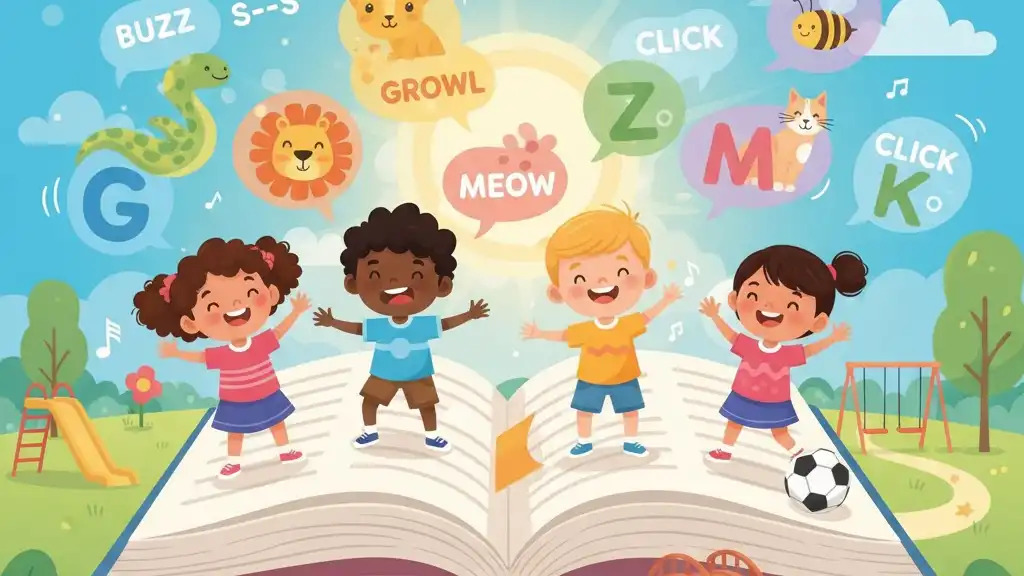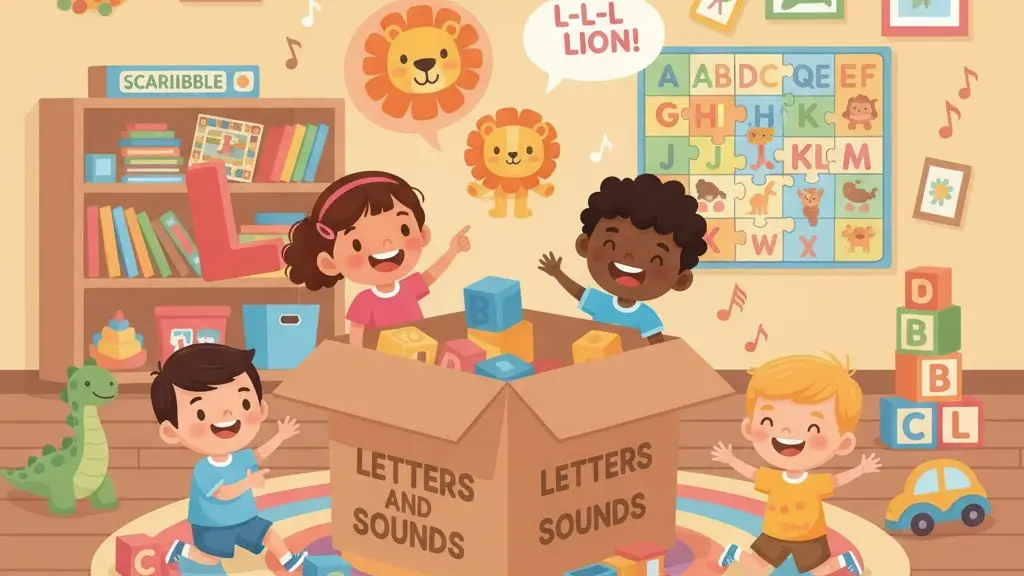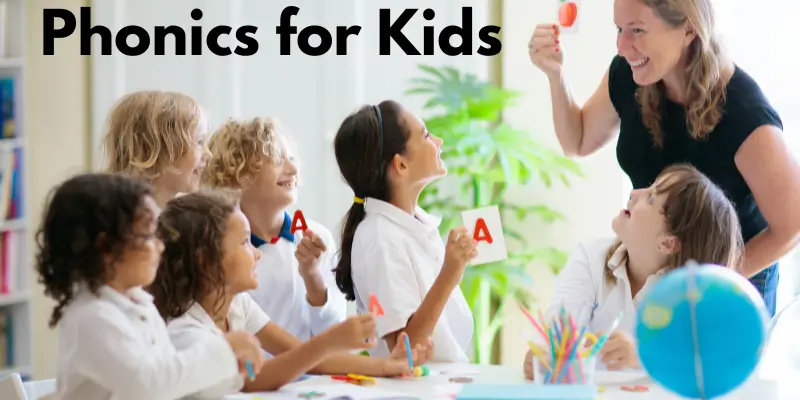Phonics for kids starts small and helping kids fall in love with reading starts with phonics for kids. Phonics for kids makes letters talk and turns play into power. Children go from silent stares at books to reading signs on the street when phonics for kids becomes part of breakfast chatter. Phonics for kids really does open doors when parents keep it light and steady. Many families worry about starting too early or too late, but phonics for kids works at any age if consistency stays in the picture. Even grandparents join in without realizing they teach.
Phonics for Kids Hides in Morning Routines
Phonics for kids slips into daily life without extra effort. Say “toast” slowly while buttering bread that stretch teaches phonics sounds naturally. Some parents set a timer for two minutes of sound play each morning, while others just weave it into conversation naturally.
Phonics for Kids Wakes Up with Food Talk
- Break “egg” into e-gg while cracking shells.
- Spot phonics words on juice cartons.
- Play a quick phonics game naming starting letters and sounds.
Toddlers soon ask for “mmm-ilk” every morning. Phonics for kids sticks when taste joins the lesson. Children start pointing out sounds on their own, like noticing the “buh” in banana before peeling it.
Phonics Sounds Make Letters Come Alive
Phonics sounds matter more than perfect handwriting. Hiss like a snake for “s” and watch eyes light up. Those phonics sounds build bridges to real words. Phonics for kids relies on these sounds daily. Animal noises become secret weapons. A growl for “g” or a meow for “m” keeps things lively.
Phonics Sounds Turn Noise into Meaning
- Buzz like a bee for “z” during park visits.
- Click tongue for “k” while kicking balls.
- Link phonics sounds to preschool phonics stories.

Skip the drill sheets. Phonics sounds work best when kids move and make noise. Phonics for kids grows stronger with every silly sound. Repetition feels like fun instead of work when voices change pitch or volume.
Phonics Game Moments in Waiting Rooms
Phonics game ideas fit tiny pockets of time. Stuck in line? Whisper “find something red that starts with rrr.” That phonics game sharpens learning letters without toys. Phonics for kids loves these quick wins. Some families keep a small notebook for jotting down spotted words. Others use phone cameras for proof.
Phonics Game Beats Screen Time Every Day
- Count steps saying phonics sounds – one for “sss”, two for “t”.
- Hunt letters and sounds on store signs.
- Create phonics words from license plates.
Kids stay calm and learn. Every phonics game plant reading skills seeds. Parents report fewer meltdowns and more engagement during errands.
Learning Letters Through Finger Paint Mess
Learning letters feels like art class. Squirt paint on paper plates and trace giant “B” shapes. The gooey fun locks learning letters in memory. Phonics for kids pairs perfectly with messy play. Add food coloring to rice for sensory bins or use shaving cream on trays.
Learning Letters Loves Sticky Fingers
- Roll dough into learning letters for cookie shapes.
- Spray water on sidewalks to write letters and sounds.
- Mix preschool phonics with bath crayons.
Mess washes off but learning letters stay forever. Cleanup becomes part of the activity when kids spray away letters with water guns.
Letters and Sounds Live on Toy Boxes
Letters and sounds appear on everything kids touch. Point to “L” on Lego and say “lll” like lion. Those letters and sounds moments build phonics words quietly. Phonics for kids sneaks in during playtime. Board games like Scrabble Junior or alphabet puzzles extend the fun naturally.
Letters and Sounds Turn Toys into Teachers
- Sort blocks by starting letters and sounds.
- Match puzzle pieces to phonics game sounds.
- Read reading and writing labels aloud.

Playtime becomes phonics for kids practice without anyone noticing. Siblings compete to find the longest word using toy letters.
Phonics Words Grow on Neighbourhood Walks
Phonics words pop up on every corner “cat” on a fence, “dog” on a gate. Sound them out together. Those phonics words make walks exciting. Phonics for kids turns streets into classrooms. Some families create maps marking favorite word spots. Others collect leaves shaped like letters.
Phonics Words Hide in Plain Sight
- Photograph phonics words for a home gallery.
- Blend phonics sounds into phonics words at crosswalks.
- Turn reading skills into scavenger hunts.
Suddenly the world becomes a giant book. Children start reading menus at restaurants before ordering.
Preschool Phonics Swings at the Park
Preschool phonics rides the swings. Chant “up-down, sss-ah” while pushing. The rhythm teaches preschool phonics through motion. Phonics for kids loves outdoor energy. Picnic blankets become reading circles with brought-along books.
Preschool Phonics Plays Outside
- Jump rope to phonics words like “hop” – h-o-p.
- Draw learning letters in dirt with sticks.
- Cloud-gaze for letters and sounds shapes.
Fresh air makes preschool phonics feel like freedom. Nature provides endless props for sound stories.
Reading Skills Spark from Sticker Charts
Reading skills grow with simple rewards. Sound out “bat” and add a sticker. Ten stickers earn a treat. Those reading skills moments add up fast. Phonics for kids celebrates every step. Some use marble jars or paper chains linking new words.
Reading Skills Celebrate Tiny Wins
- Track new phonics words on fridge charts.
- Cheer every reading and writing attempt.
- Turn phonics game victories into stories.
Pride fuels reading skills more than pressure ever could. Children beg to practice just to add another sticker.
Reading and Writing Begins with Magnets
Reading and writing starts on the fridge door. Move magnets to spell “sun” while saying sounds. That reading and writing loop cements everything. Phonics for kids makes writing feel easy. Morning messages appear before school, and evening replies wait after.
Reading and Writing Clicks with Movement
- Leave phonics words notes for siblings.
- Draw under reading and writing for picture stories.
- Mail preschool phonics letters to grandma.
Laughter over “Mom is big” proves reading and writing works. Postcards from vacations include practiced words.
Conclusion
Phonics needs only a voice and a little time. Phonics for kids starts at the table, moves to the park, and ends at bedtime stories. Start with one phonics sounds at breakfast. Add a phonics game during errands. Watch learning letters become letters and sounds magic. Phonics words fill conversations while preschool phonics feels like play. Reading skills arrive gently and reading and writing becomes natural. Phonics for kids lights the way hold the hand. Families everywhere discover that consistent, joyful practice creates confident readers ready for any adventure.

